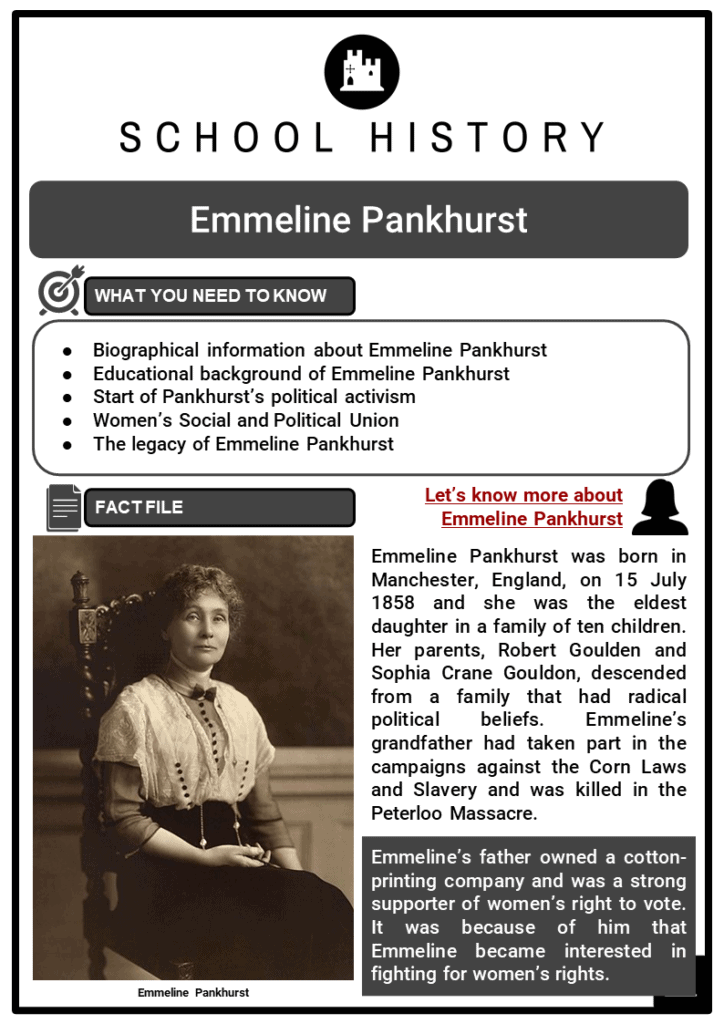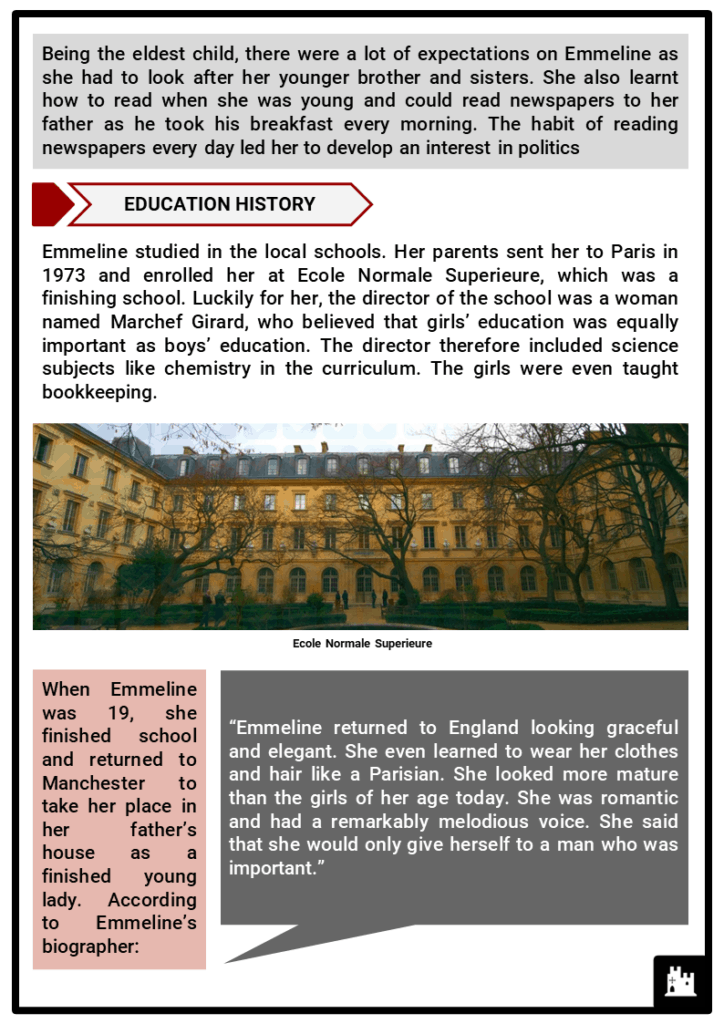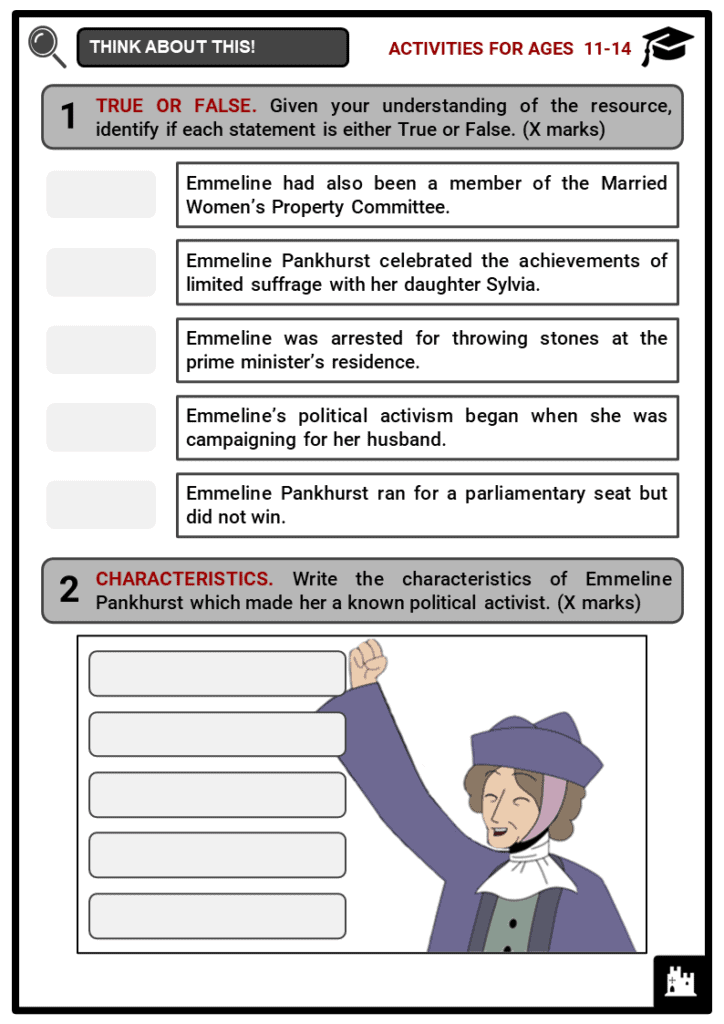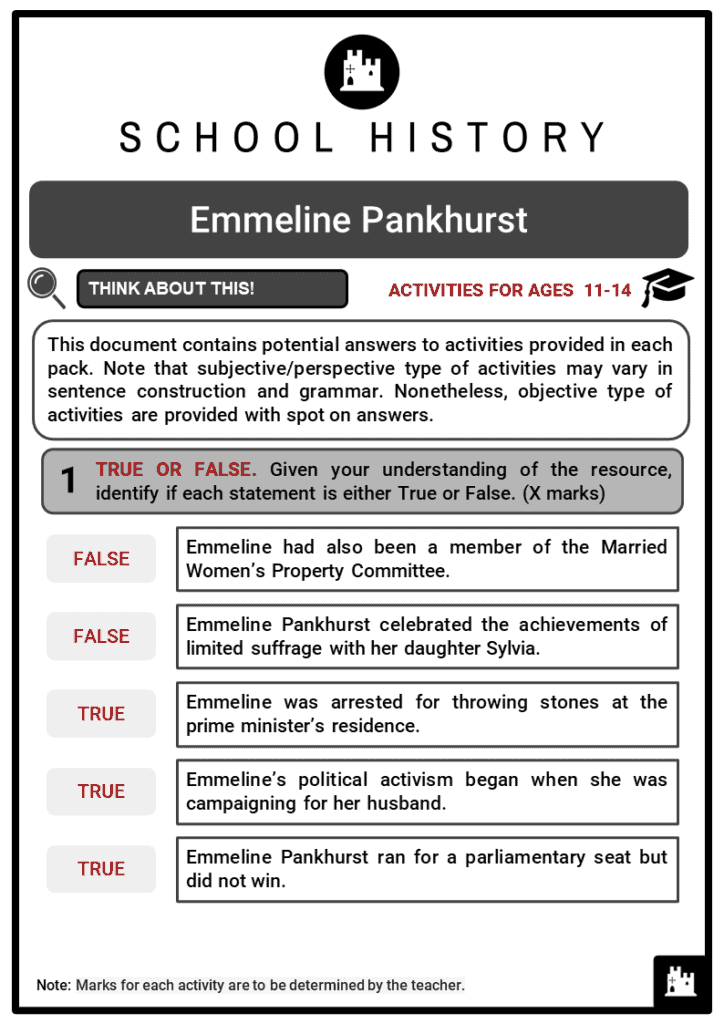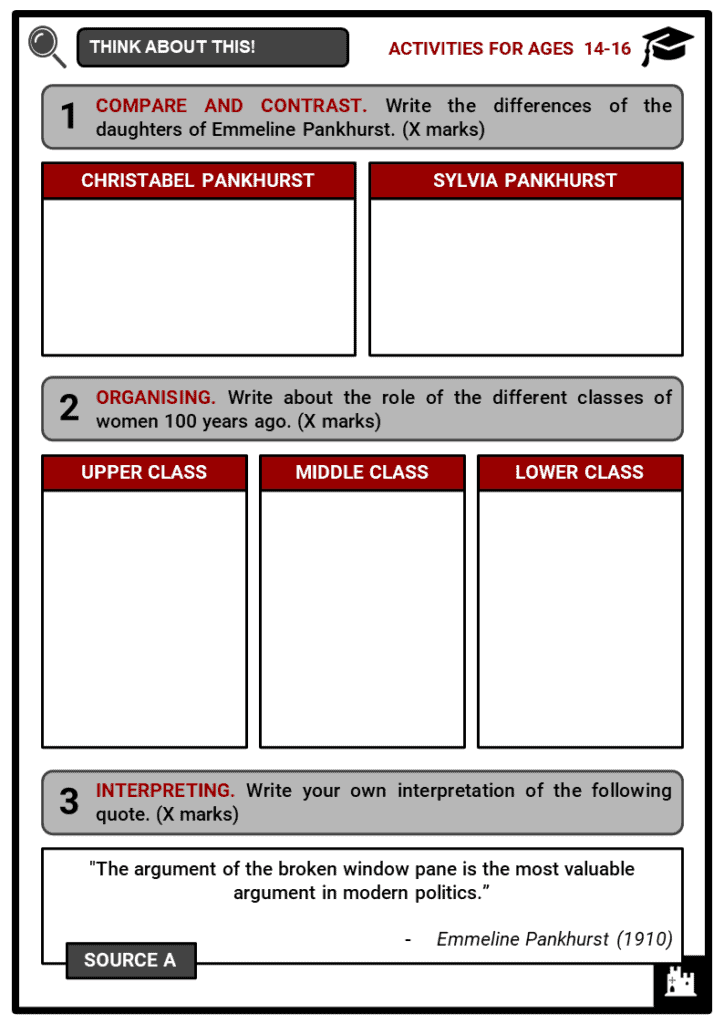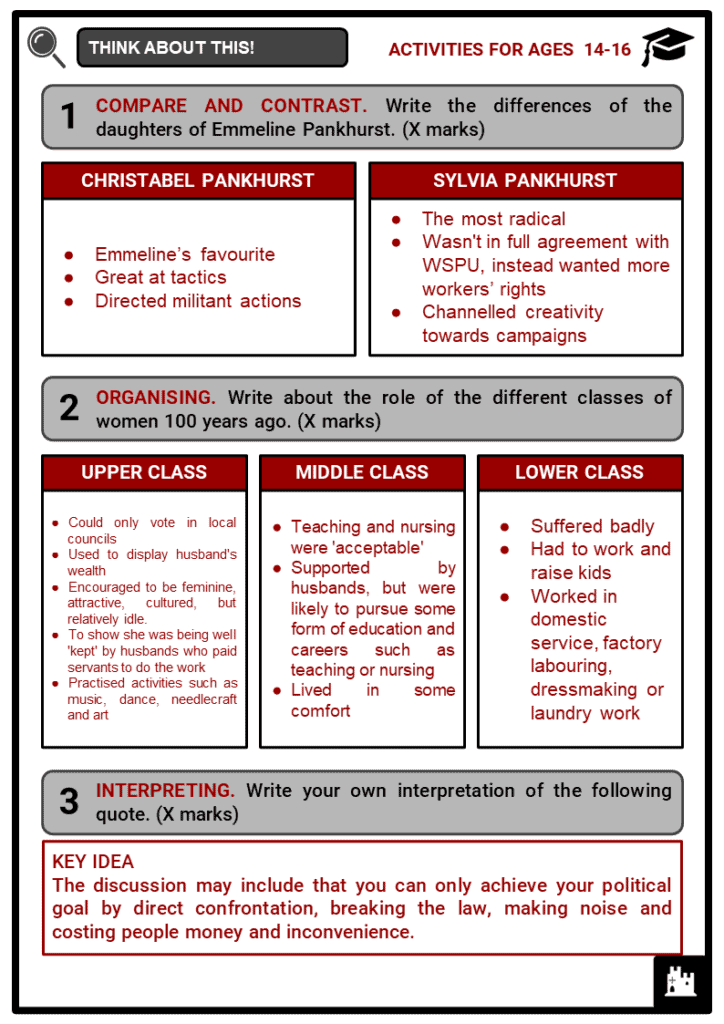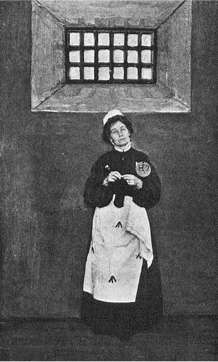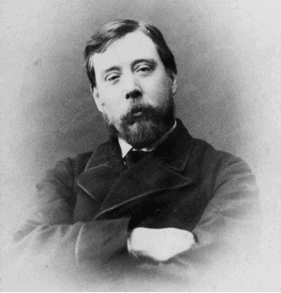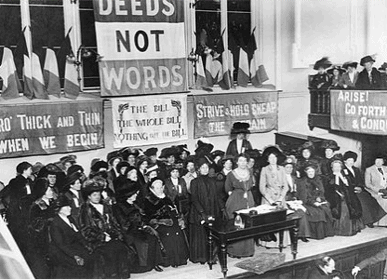Download Emmeline Pankhurst Worksheets
Do you want to save dozens of hours in time? Get your evenings and weekends back? Be able to teach Emmeline Pankhurst to your students?
Our worksheet bundle includes a fact file and printable worksheets and student activities. Perfect for both the classroom and homeschooling!
Table of Contents
Add a header to begin generating the table of contents
Summary
- Biographical information about Emmeline Pankhurst
- Educational background of Emmeline Pankhurst
- Start of Pankhurst’s political activism
- Women’s Social and Political Union
- The legacy of Emmeline Pankhurst
Key Facts And Information
Let’s know more about Emmeline Pankhurst
- Emmeline Pankhurst was born in Manchester, England, on 15 July 1858 and she was the eldest daughter in a family of ten children. Her parents, Robert Goulden and Sophia Crane Gouldon, descended from a family that had radical political beliefs. Emmeline’s grandfather had taken part in the campaigns against the Corn Laws and Slavery and was killed in the Peterloo Massacre.
- Emmeline’s father owned a cotton-printing company and was a strong supporter of women’s right to vote. It was because of him that Emmeline became interested in fighting for women’s rights.
- Being the eldest child, there were a lot of expectations on Emmeline as she had to look after her younger brother and sisters. She also learnt how to read when she was young and could read newspapers to her father as he took his breakfast every morning. The habit of reading newspapers every day led her to develop an interest in politics
Education History
- Emmeline studied in the local schools. Her parents sent her to Paris in 1973 and enrolled her at Ecole Normale Superieure, which was a finishing school. Luckily for her, the director of the school was a woman named Marchef Girard, who believed that girls’ education was equally important as boys’ education. The director therefore included science subjects like chemistry in the curriculum. The girls were even taught bookkeeping.
- When Emmeline was 19, she finished school and returned to Manchester to take her place in her father’s house as a finished young lady. According to Emmeline’s biographer: “Emmeline returned to England looking graceful and elegant. She even learned to wear her clothes and hair like a Parisian. She looked more mature than the girls of her age today. She was romantic and had a remarkably melodious voice. She said that she would only give herself to a man who was important.”
Meeting Richard Pankhurst
- Not long after returning from Paris, Emmeline met a lawyer named Richard Pankhurst. Richard, also a strong advocate for women’s suffrage, became her suitor.
- Richard was the one who drafted the amendment to the Municipal Franchise Act.
- This amendment of 1869 allowed unmarried women to vote in local elections.
- Richard had also been a member of the Married Women’s Property Committee and was in charge of drafting the Women’s Property Bill.
- The bill was passed in parliament in 1870.
- Despite a significant age difference between Richard and Emmeline, they fell in love. Richard was 44 while Emmeline was just 20 when they met. Richard Pankhurst and Emmeline married in 1879 and had four children in their first six years of marriage.
- Richard Pankhurst became one of the leading radical politicians in Manchester, and in 1886 Richard and Emmeline moved their family to London. They had a home in Russell Square that quickly became a centre for gatherings of both socialists and suffragists. Richard and Emmeline Pankhurst were also members of the Fabian Society.
Beginning Of Her Political Activism
- Emmeline’s political activism began when she was campaigning for her husband in his unsuccessful attempts to run for parliament and when she was hosting the many political gatherings at their London home.
- She began supporting the Women’s Franchise League in 1889. Their campaigns were aimed at enfranchising all women, both married and unmarried, and her husband encouraged her in all her endeavours until his death in 1898.
WSPU Takes Shape
- After her husband died, Emmeline was consumed with grief and for a while concentrated on coping with her strained circumstances. However, despite going through tough times, Emmeline never lost her passion for women’s rights. In 1903, she created the Women’s Social and Political Union, WSPU.
- This organisation was a women-only group that put all its focus on women’s voting rights. The organisation’s slogan was “Deeds Not Words”.
- WSPU took non-violent forms such as making speeches, gathering petition signatures, and published a newsletter known as “Votes for Women”. The members then began a loud protest outside the parliament building when a bill for women’s suffrage was filibustered.
- In 1905, one of Pankhurst’s daughters, Christabel, together with another WSPU member named Annie Kenney, were arrested after they confronted the police. They had attended a meeting to demand that the Liberal Party support their cause.
- This arrest gave the WSPU a lot of attention and garnered public interest. As a result, Pankhurst decided to follow a more combative approach than other suffrage groups.
- At first, WSPU held rallies and buttonholed politicians. These radical tactics led to the arrest of several WSPU members. Even Pankhurst was not spared as she was arrested in 1908 and sent to prison. Pankhurst’s group was soon dubbed “Suffragettes” by the Daily Mail.
Rise Of The Suffragettes
- Being arrested did not discourage Pankhurst or her group and she encouraged WSPU members to continue holding demonstrations.
- In 1910 and 1911 WSPU was disappointed when a bill on women’s suffrage failed to advance in parliament, resulting in escalated protests.
- In 1913, WSPU again decided to escalate their tactics. Their militant actions now included vandalising public art, window-breaking and arson.
- When the women got arrested, they engaged in hunger strikes while in prison. Even when the government tried to force-feed them, they continued on hunger strikes. This made the government release some prisoners early.
- Pankhurst was arrested again in 1912 and sentenced to nine months in prison. She was arrested for throwing stones at the prime minister’s residence. While in prison, Pankhurst embarked on a hunger strike that resulted in her early release as officers failed to force-feed her.
- The government did not give up on dealing with WSPU members. In 1913, Parliament enacted the Prisoners’ Temporary Discharge for Ill Health Act. This law allowed the government to release prisoners when they were ill and rearrest them once they recovered. This act became known as the “Cat and Mouse Act”.
- In 1913, an incendiary device went off in a house that was being built for the exchequer, and Pankhurst was blamed for inciting the crime. She received a three-year prison sentence, but her hunger strike resulted in early release. However, because of the Cat and Mouse Act, she would be re-arrested and released many times. With the arrival of World War I, everything changed.
World War I And Voting
- When World War I began in 1914, Pankhurst called for a halt to their demonstrations and militancy. First, though, the WSPU had to ensure that they had a country to vote in after the war.
- As a result, all WSPU prisoners were released. Pankhurst supported the government’s efforts in winning the war by encouraging women to join the war effort. Women filled factory jobs to free up men who could fight in the war.
- As a result of women’s contributions during wartime, the British government was convinced of women’s importance in society. Women were granted limited voting rights as a result. Women who were above 30 years old and had met the property requirement were allowed to vote. In 1918, another amendment allowed women to be elected to parliament.
Pankhurst’s Later Years
- Even though Emmeline Pankhurst’s daughters were all members of the WSPU, her daughter Christabel was her favourite and Pankhurst celebrated the achievements of limited suffrage with Christabel.
- Her daughter Sylvia disagreed with Pankhurst’s combative approach towards their struggles, while Adela relocated to Australia.
- Although Pankhurst still desired universal women’s suffrage, her way of doing politics changed after the war.
- She even ran for a parliamentary seat but did not win because she could not campaign very well due to ill health.
- She died in London on 14 June 1928, at the age of 69. Pankhurst did not live to witness the full realisation of her dreams.
- On 2 July, 1928, barely a month after she died, Parliament passed a bill that gave women voting rights that were on par with those of their male counterparts. Women could now vote from the age of 21.
- "They have fought the Bolshevist and Pacifist element with great skill, tenacity, and courage."
Voting Rights Centennial
- The UK government commemorated the 100th anniversary of the Representation of the People Act on 6 February, 2018 and the then Prime Minister of the UK, Theresa May, gave a speech during the commemoration.
- One of Emmeline Pankhurst’s granddaughters, Helen, recently released a book entitled Deeds Not Words.
- It is safe to say that she is an activist in the spirit of her grandmother.
- Helen has even gone further to express her concern with the previous President Donald Trump’s administration.
- She is concerned that the actions and words of the American president could undermine all the gains that have been made over the years in fighting for equality for women.
Image sources:
- https://upload.wikimedia.org/wikipedia/commons/thumb/0/0c/Emmeline_Pankhurst_in_prison.jpg/340px-Emmeline_Pankhurst_in_prison.jpg
- https://commons.wikimedia.org/wiki/File:Richard_Pankhurst,_c.1890._(22301523674).jpg
- https://upload.wikimedia.org/wikipedia/commons/thumb/8/80/Suffragettes%2C_England%2C_1908.JPG/440px-Suffragettes%2C_England%2C_1908.JPG

